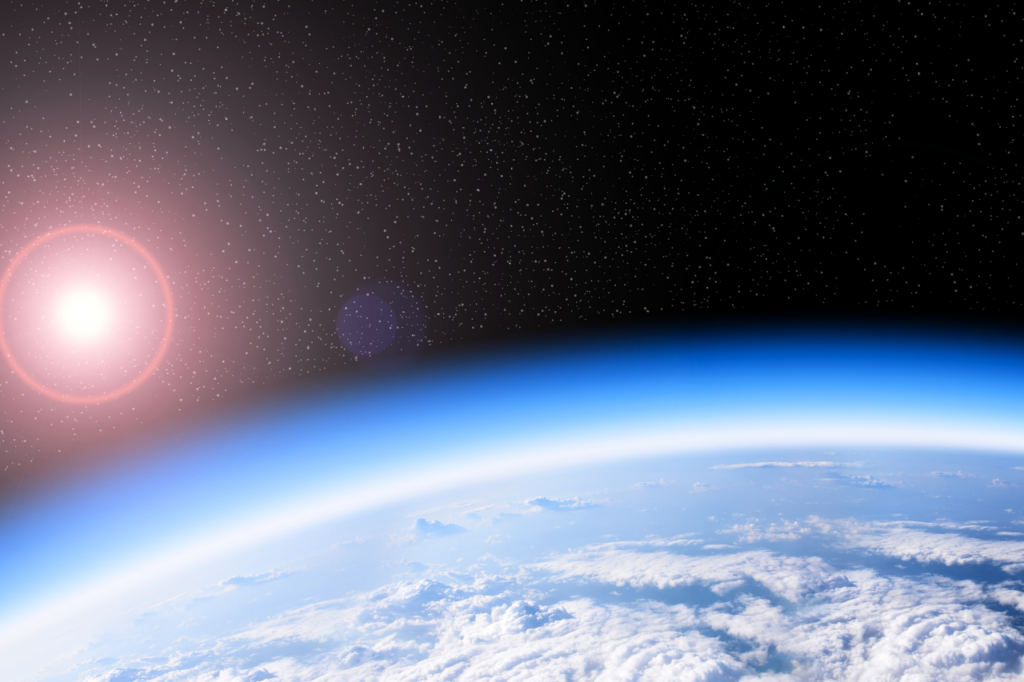
At the centre of the stratosphere, 10-50 kilometres above the Earth, lies the vital ozone layer. It is made by the sun’s light constantly converting some of the oxygen in the air into ozone [1]. Ozone consists of three oxygen molecules, O3, while the oxygen we breathe consists of two molecules, O2 [2]. The ozone layer absorbs and scatters ultraviolet light, UV-B radiation, from the sun [1].
At the centre of the stratosphere, 10-50 kilometres above the Earth, lies the vital ozone layer. It is made by the sun’s light constantly converting some of the oxygen in the air into ozone [1]. Ozone consists of three oxygen molecules, O3, while the oxygen we breathe consists of two molecules, O2 [2]. The ozone layer absorbs and scatters ultraviolet light, UV-B radiation, from the sun [1].
In the mid-1980s, scientists discovered a weakening of the ozone layer, primarily attributed to human emissions of long-lived freons (CFCs) from refrigerators and spray bottles, nitrogen compounds, and chlorinated and brominated substances. Global political agreements subsequently banned the use and production of many of these substances, and there are indications that the ozone layer is now on the path to recovery.
However, even if ozone-depleting substances decrease atmospheric concentration, it isn’t easy to see direct effects on the ozone layer. The immediate impact is challenging to see because there are natural variations in the breakdown and formation of ozone, which means that the ozone hole’s size varies from year to year [2]. However, there is hoped to be a definite recovery in the 2030s [1].
ReThink’s Reflection
The political decisions to ban ozone-depleting substances are an excellent example of how it is possible to influence the development of our planet in a positive direction.
What should we ban at the moment?
Sources
- Naturvårdsverket – The ozone layer

- National Geographic – What is the ozone layer, and why does it matter?

November 2023, TÄNKOM | Revised November 2023 RETHINK



